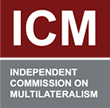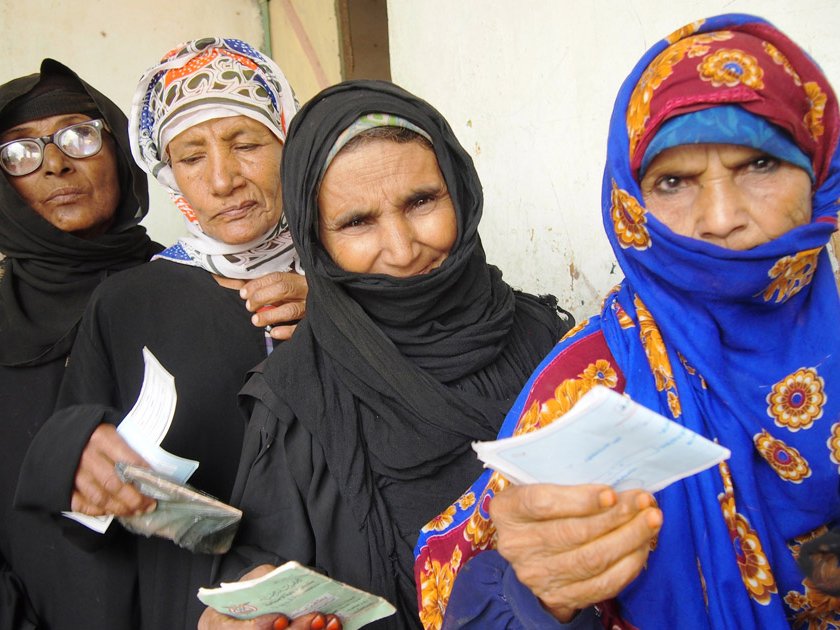When it comes to increasing women’s participation in peacemaking, getting access to positions of power is a major barrier, according to Antonia Potter Prentice, Senior Manager on Mediation Support, Gender and Inclusion for the Crisis Management Initiative (CMI). “If they don’t have access to the sort of positions that put them at the head of multilateral organizations or political organizations, then it’s hard for them to get the space,” she said.
Another obstacle is the political parties themselves. “We can’t really impose a woman or bring a woman in to a situation where perhaps culturally and conservatively this isn’t accepted,” Ms. Potter Prentice noted. But at the end of the day, the power to make decisions rather than gender is what matters, she said.
Speaking with Andrea Ó Súilleabháin, Senior Policy Analyst at the International Peace Institute, Ms. Potter Prentice cited the record of Yemen, which has a tradition of women in mediation, as an example of cultural practices that leverage to increase women’s participation.
“They’re actually expected to do it, and that was something that didn’t come out at all when we heard all of the excitement about the women’s role in the revolution,” she said.
Turning to leadership in the United Nations and the multilateral system, she argued that leaders have to pull together.
“There’s nothing more embarrassing and undermining to an argument than when you’ve got senior leaders saying and doing different things,” she said. “We would really love to see unified leadership at the top of the UN system showing that it is just not acceptable for them to do this.”
Ms. Potter Prentice also highlighted the importance of investing in prevention. “We need to make sure that long-term funding is going to women’s organizations and women’s movements on the ground,” she said, which supports the work they do in prevention. “It’s really important that we start getting the money down through the system.”
This discussion was part of a series of interviews done on the margins of ICM’s fifth retreat, on women, peace and security, held on June 19-20.
Listen to the interview:
Women’s participation in formal peacemaking is one area of the women, peace and security agenda that has seen the slowest progress. In your experience, what are the major barriers to increasing women’s participation?
It’s not a supply-side problem—it’s a demand-side problem. If you look at the men who are in processes, these are not necessarily men who have huge experience in negotiation and mediation, but they are where they are usually for political reasons. Some of the barriers for women are if they don’t have access to the sort of positions that put them at the head of multilateral organizations or political organizations, then it’s hard for them to get the space. That is increasingly changing actually because, particularly now, we see the imposition of quotas in post-conflict parliament. We’re going to see in years to come a whole slew of very talented and experienced women parliamentarians who could fill these positions, but up until now, that’s been a main problem.
The second point is about the way that the parties will react. We can’t really impose a woman or bring a woman in to a situation where perhaps culturally and conservatively this isn’t accepted. We now have a full-range of reasons that actually combat this. In many situations, certainly from an international perspective, a woman holding a certain position can be treated in another culture as a man. For example, when you have a female foreign minister, this is something that will be accepted the world over as a position of power. It tells you that it’s really more, at the end of the day, that power is the thing that matters, and the power to make decisions rather than the gender of the person in question.
As you said, we hear this one reason of cultural resistance among the negotiating groups as a reason for excluding women from the peace table. From your work, do you have examples where cultural or local norms have been positively leveraged to increase women’s participation?
We’re finding these things more and more, and this is one of the reasons why [UN Security Council resolution] 1325 was so great because it enabled us to uncover a whole lot of stuff that wasn’t new—it was always there, but now we know it.
For example, one of the things we’ve done at CMI recently is a mapping in Yemen, a place now sadly in hot conflict, of local organizations, national organizations, and international ones that have been working on women’s political participation, but also participation in conflict resolution and peace building. What’s very interesting is that in Yemen, women have a very well recognized traditional role in mediation in communities. They’re actually expected to do it, and that was something that didn’t come out at all when we heard all of the excitement about the women’s role in the revolution, and also when we heard about the 30% quota for the NDC (National Dialogue Conference). You didn’t hear anybody talk about the fact that Yemen itself, with its terrible gender indicators, has a tradition of women playing this role in society. In fact, if you look around the world, this is very common—you see it in the Solomon Islands, you see it across societies and cultures, so it’s something that probably we should be looking for by default instead of being surprised when we find it.
We often hear stories of combatants and negotiating groups, when challenged to be more inclusive on their own teams, pointing back to the UN and saying, “Well, we don’t see diversity in the UN team itself.” So moving forward, what is needed from senior leaders in the UN and the multilateral system?
One is the leaders have to walk the talk, and they have to pull together. There’s nothing more embarrassing and undermining to an argument than when you’ve got senior leaders saying and doing different things. We would really love to see unified leadership at the top of the UN system showing that it is just not acceptable for them to do this.
Of course, they can’t force parties at the end of the day to behave a certain way, but they can certainly set an example, and they should also be prepared to be humble and point out when parties or other organizations have done a better job. So right now we’ve got, for example, the AU [African Union] sending out some very positive messages on women, peace and security, and having just promoted a whole range of new peace and security envoys, of who half are women. It would be great to hear the UN say, “Wow! That’s wonderful. We congratulate the AU, and now it’s our turn.”
In this year of UN peace and security reviews, we’re having many conversations about funding for women, peace and security and gender-sensitive peacebuilding. How does the current funding practices need to change?
It’s a tough environment. I would love to say it’s time to increase the pie, and I’m going to say it anyway. I think that’s going to be tough, but I think recognizing just how important the investment is in prevention, what role we think women and women’s organizations should play in that—we need to make sure that long-term funding is going to women’s organizations and women’s movements on the ground, core support that enables them to do this.
It’s really important that we start getting the money down through the system. We don’t want to keep it in New York, we don’t want to keep it in the capitals, we don’t want to keep it in the international organizations. We should be pushing it down to those organizations, and then we will maybe see what an investment that could really prevent and combat the things that we fear the most, like violent extremism, could be like.

